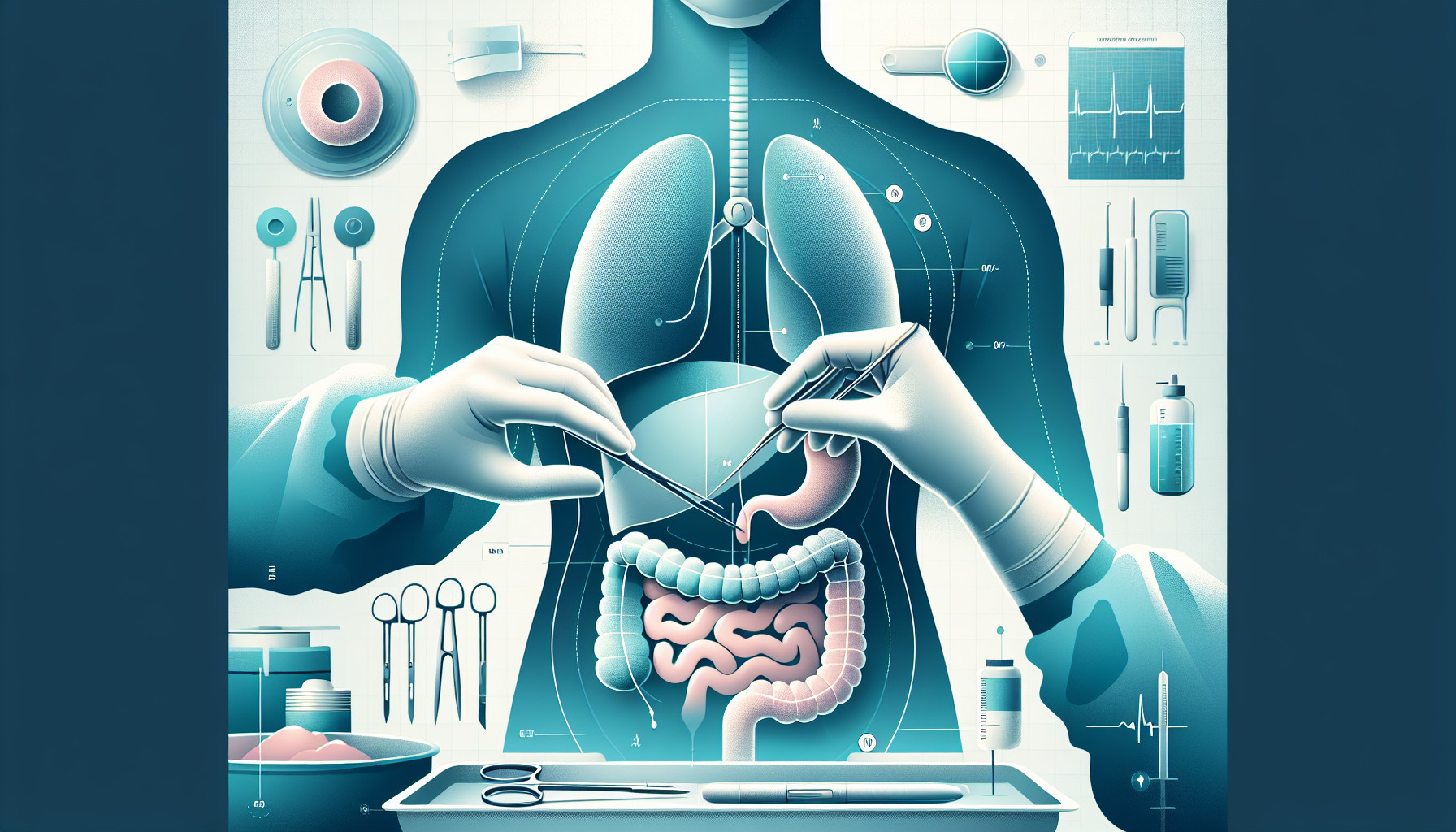Our Summary
This research paper is a video tutorial that shows how to surgically fix a type of hernia (when an organ pushes through an opening in the muscle or tissue that holds it in place) that occurred after a 69-year-old patient had his esophagus removed. The patient had his esophagus taken out 5 years ago due to cancer in the lower part of the esophagus. He came in with severe pain in the upper middle part of his stomach, feeling like he was going to throw up, and hiccups. During the surgery, they found that the small intestine, which had moved out of place, was still healthy. The surgeons fixed the hole by sewing the tube that now acts as the esophagus to the diaphragm. 23 months after the surgery, the patient has no symptoms and the hernia has not come back.
FAQs
- What is a hiatal hernia and how is it repaired laparoscopically?
- What symptoms led to the diagnosis of the hiatal hernia in the patient?
- What were the results of the follow-up examination 23 months after the hiatal hernia repair?
Doctor’s Tip
A doctor might tell a patient after hiatal hernia repair to avoid heavy lifting or strenuous activity for a period of time to allow for proper healing. It is also important to follow a recommended diet and avoid foods that may trigger symptoms of acid reflux, such as spicy or acidic foods. Additionally, maintaining a healthy weight and avoiding smoking can help prevent future hernias and reduce symptoms. Regular follow-up appointments with your doctor are important to monitor your recovery and ensure the hernia does not recur.
Suitable For
Patients who are typically recommended for hiatal hernia repair are those who have symptoms such as heartburn, regurgitation, chest pain, difficulty swallowing, or vomiting that are not relieved by medications. Additionally, patients who have complications such as bleeding, ulcers, or strictures caused by the hiatal hernia may also be recommended for repair. Patients with a hiatal hernia that is causing severe symptoms or complications may require surgical intervention, such as laparoscopic repair, to alleviate their symptoms and prevent further complications.
Timeline
Before hiatal hernia repair:
- Patient may experience symptoms such as heartburn, chest pain, difficulty swallowing, regurgitation, and nausea.
- Patient may undergo diagnostic tests such as endoscopy, barium swallow, and pH monitoring to confirm the presence of a hiatal hernia.
- Patient may be advised to make lifestyle changes such as avoiding trigger foods, losing weight, and elevating the head of the bed to reduce symptoms.
After hiatal hernia repair:
- Patient undergoes laparoscopic repair of the hiatal hernia, during which the herniated tissue is reduced and the defect is sealed.
- Patient may experience discomfort and bloating immediately post-surgery, but pain is usually minimal and controlled with medication.
- Patient is typically discharged from the hospital within a day or two after surgery and instructed to follow a soft diet for a few weeks.
- Patient is advised to avoid heavy lifting and strenuous activities for a few weeks, and to gradually resume normal activities as tolerated.
- Patient is scheduled for follow-up appointments to monitor healing and ensure there is no recurrence of the hiatal hernia.
- Patient may experience resolution of symptoms such as heartburn and chest pain, and improved quality of life after the hiatal hernia repair.
What to Ask Your Doctor
- What is a hiatal hernia and how is it diagnosed?
- What are the symptoms of a hiatal hernia and how will repairing it improve my symptoms?
- What are the risks and benefits of laparoscopic hiatal hernia repair compared to other surgical options?
- What is the success rate of laparoscopic hiatal hernia repair and what is the likelihood of recurrence?
- What is the recovery process like after laparoscopic hiatal hernia repair and how long will it take to return to normal activities?
- Are there any dietary or lifestyle changes I should make before or after the surgery to improve the outcome?
- What are the potential complications of hiatal hernia repair surgery and how are they managed?
- Will I need any follow-up appointments or tests after the surgery to monitor my progress?
- How experienced are you in performing laparoscopic hiatal hernia repair and what is your success rate with this procedure?
- Are there any alternative treatments or therapies that I should consider before deciding on surgery for my hiatal hernia?
Reference
Authors: Truchon ME, Truchon A, Ouellette D, Rakovich G. Journal: Multimed Man Cardiothorac Surg. 2025 Feb 12;2025. doi: 10.1510/mmcts.2024.128. PMID: 39936878
